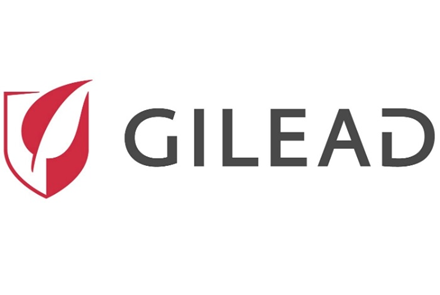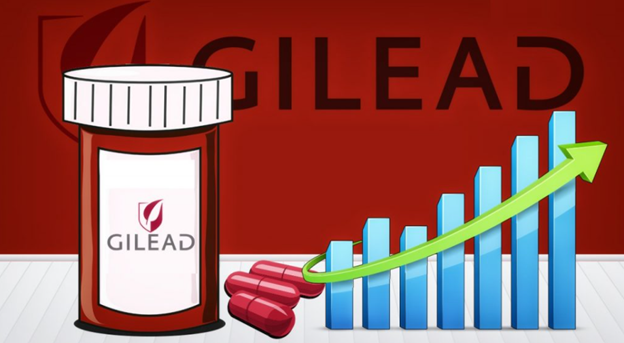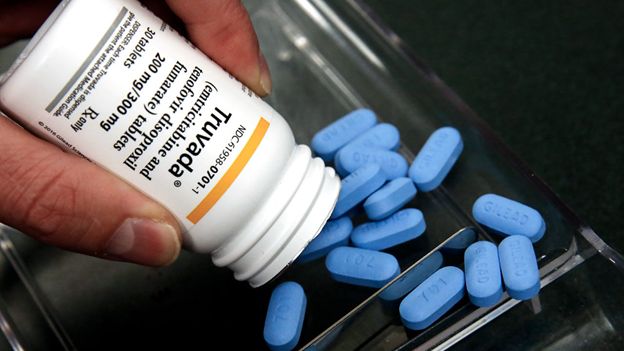Healthcare in a world of dating and social media? Possible! Thanks to this company’s unconventional strategy… [Monday: Marketing Marvels]

What comes to your mind when you hear the words, “Healthcare Marketing?”
TV commercials involving medicines?
Ads that feature testimonies of people who overcame life-threatening diseases?
Reminders about staying physically fit and healthy?
…
Different medical and pharmaceutical companies have their own marketing strategies to promote their brand.
Do you think all these businesses use the conventional method of advertising their products or services?
The answer is NO.
In fact, one company is moving away from traditional healthcare marketing and is starting to adapt unconventional methods to raise awareness about its products.
Gilead Sciences, Inc. is an American biopharmaceutical company headquartered in Foster City, California.
Founded in June 1987 by Doctor Michael L. Riordan, the company researches, develops, and commercializes antiviral drugs and innovative medicines.
Gilead’s primary therapeutic areas of focus include Human Immunodeficiency Virus (HIV), liver and cardiovascular diseases, hematology, oncology, inflammation, and respiratory.
Here are some of the products sold by Gilead under each category:
- HIV Prevention and Treatment: Genvoya, Stribild, Complera, Atripla, Truvada, Viread, Emtriva, Tybost, and Vitekta.
- Liver Diseases: Viread and Hepsera for the treatment of hepatitis B and Sovaldi for hepatitis C medications.
- Cardiovascular Diseases: Letairis for pulmonary artery hypertension, Ranexa for the treatment of chronic angina, and Lexiscan/Rapiscan for myocardial perfusion imaging (MPI).
- Hematology and Oncology: Zydelig for blood cancer treatment.
- Inflammation and Respiratory: Cayston for the treatment of cystic fibrosis and Tamiflu for prevention and cure of influenza A and B.
Part of Gilead’s growth as a biopharmaceutical giant is its focus on strategic acquisitions. Since 1999, the company has acquired 16 businesses, which added medical capabilities to the firm.
In 2006, the acquisition of Corus Pharma Inc. and Myogen Inc. strengthened Gilead’s position in the respiratory and cardiopulmonary treatment arena.
In 2009, the company acquired CV Therapeutics Inc., which specialized in the cardiovascular market.
Then, from 2010 to 2011, Gilead acquired 3 companies to expand its research and development in the field of oncology.
The company’s largest acquisition was Pharmasset Inc. in 2011. This enabled Gilead to own rights to the Hepatitis C treatment, Sovaldi.
In 2019, Gilead made strategic acquisitions of Galapagos to enter the inflammation medication business and Nimbus Apollo to access potential treatment for steatohepatitis (fatty liver disease) and carcinoma.
Thanks to these acquisitions, Gilead was able to expand its reach even more, create medicines that cater to different types of diseases, and become one of the leading biopharmaceutical companies in the world!
So… how did the company use unconventional methods to market its products?
3 things: Tumblr, Snapchat, and dating sites like Grindr, Jack’d, and Hornet!
Gilead uses these social media platforms for the “Healthysexual Campaign,” which advertises the company’s HIV preventative treatment, Truvada.
The campaign started in 2015 and is still ongoing up to this day.
According to James Meyers, Gilead’s Executive Vice President for Worldwide Commercial Operations, the Healthysexual Campaign aims to boost awareness about the drug and its use as a pre-exposure prophylaxis (PrEP) against HIV.
[Pre-exposure Prophylaxis (PrEP): A way for people who are at high-risk of contracting HIV to prevent infection by taking a pill every day.]
In order for the campaign to reach more people and make them familiar with Truvada…
… Gilead regularly creates “frank and forthright” healthysexual posts and ads on its Tumblr, Snapchat, and various dating app pages!
In one of its posts, the company said:
“From HIV testing to threads, coordinate with your partner. Being on the same page means you’re in position… for any position.”
Gilead spokesperson Ryan McKeel said the Healthysexual Campaign is a “smart attitudinal approach” because it targets different couples with different races in different communities.
In McKeel’s words:
“The campaign is designed to engage sexually active, at-risk people with positive public health messages.”
To further extend the campaign’s reach, Gilead couples its online marketing efforts with offline advertisements by placing “healthysexual” posters on subway stations and MTA (Metropolitan Transportation Authority) buses in the US.
That way, even if people are not online, they will still encounter the campaign as they commute to work or other places.
As stated by Gilead’s EVP, James Meyers:
“If we can prevent HIV from occurring, ultimately that’s going to bring down costs of treatment―and that’s a lifetime cost of treatment. We’ll be using social media and dating sites and Tumblr and Snapchat and things such as that, because they are much more likely to reach this type of population.”
In the early stages of the Healthysexual Campaign, Gilead reported that Truvada sales increased to USD 2.38 billion in 2016, up from USD 2.05 billion in 2015.
In the past five years, Gilead Sciences, Inc. has recorded revenues of:
- USD 30.3 billion in 2016
- USD 26.1 billion in 2017
- USD 22.2 billion in 2018
- USD 22.3 billion in 2019
- USD 24.6 billion in 2020
According to the company’s 2019 annual report, Gilead will continue to collaborate with its partners worldwide to treat (and eventually eliminate) some of the most challenging public health threats.
Gilead Sciences, Inc.’s Earning Power: Valens Research vs. As-reported numbers
Gilead Sciences, Inc. (GILD:USA) makes for a great case study that we come back to regularly. One great reason?
The company has proven itself to be a better earning power generator than investors might think.
So, how well has GILD been growing its business in the past years?
The research doesn’t lie—nor do the results. Earning power (the blue bars) continues to show results higher on average than what traditional databases show.
The blue bars in the chart above represent GILD’s earning power (Uniform Return On Assets). GILD has seen robust, yet volatile profitability. After improving from 29% in 2005 to 56% in 2010, Uniform ROA declined to 41%-46% in 2011-2013. Thereafter, Uniform ROA recovered until it reached a peak of 91% in 2015 driven by the launch of Sovaldi, but started to collapse in 2017 until it reached 36% levels in 2020.
The global ROA is just 6%.
The orange bars are the company’s as-reported financial information. If you relied on these numbers, you will see a company with understated profitability. As-reported ROA (return on assets, a measure of earning power) only ranged from 9% to 33% in the past sixteen years. Its ROA in 2020 was only at 11%, far lower than its Uniform ROA in 2020.
That’s what you’ll see in Yahoo Finance, Google Finance, and most other databases.
The company’s stock price also performed better than the rest of the stock market over the decade, which we can see in the blue line in the chart below. Its returns have been well above the market.
The numbers show that GILD has been doing well and making a profit.
Gilead acknowledges that the development of innovative medicines is only 1 aspect of improving people’s health.
By investing in programs that promote prevention, strengthen healthcare infrastructure, and provide education to different communities across the globe, the company believes it will create possibilities for “life-changing medicines.”
With its core values of integrity, inclusion, teamwork, accountability, and excellence intact, Gilead operates with a goal to stay true to its mission and vision:
To “discover, develop, and deliver innovative therapeutics for people with life-threatening diseases” and “create a healthier world for all people.”
About The Dynamic Marketing Communiqué’s
“Monday Marketing Marvels”
Too often, industry experts and the marketing press sing the praises of some company’s marketing strategy.
…Only for the audience to later find out that their product was a flop, or worse, that the company went bankrupt.
The true ROI in marketing can’t be separated from the business as a whole.
What good is a marketing case study if one can’t prove that the company’s efforts actually paid off?
At the end of the day, either the entire business is successful or it isn’t. And the role of marketing is always paramount to that success.
Every Monday, we publish a case study that highlights the world’s greatest marketing strategies.
However, the difference between our case studies and the numerous ones out there, is that we will always make certain that the firm really did generate and demonstrate earning power worthy of study in the first place (compliments of Valens Research’s finance group).
By looking at the true earnings of a company, we can now rely on those successful businesses to get tips and insights on what they did right.
We’ll also study the greatest marketing fails and analyze what they did wrong, or what they needed to improve on. We all make our mistakes, but better we learn from others’ mistakes—and earlier, rather than later.
Hope you found this week’s marketing marvel interesting and helpful.
Stay tuned for next week’s Monday Marketing Marvels!
Cheers,
Kyle Yu
Head of Marketing
Valens Dynamic Marketing Capabilities
Powered by Valens Research
www.valens-research.com











